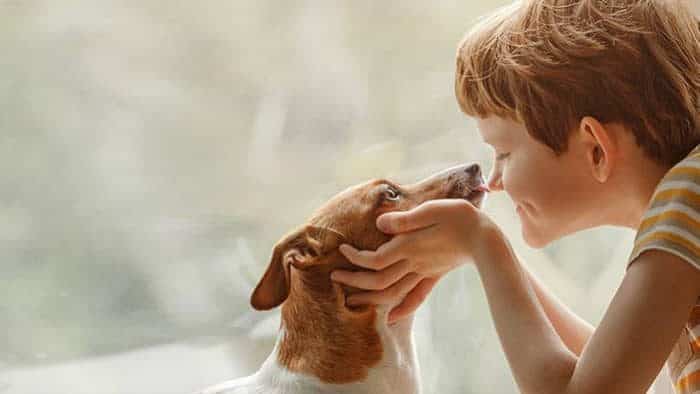Why Does Your Dog Touch Your Nose?

Touching the nose is a canine ritual that everyone is familiar with. When a female dog approaches several puppies that are not her own, she will lower her head and bump noses with the puppies one by one. Sometimes, the mother dog will touch the puppy’s face with her nose and smell other body parts. These interactions all start with nose touching.
Touching the nose between good friends:
For animals, touching noses is part of daily greeting rituals. Cats do this behavior more often than dogs, and they usually rub each other’s bodies when nose-to-nose and sometimes sniff each other’s heads or other parts. Cats generally interact with any friendly species they encounter.
Dogs are picky about who they bump into. Not every dog will bump into each other whenever they greet each other. However, it is common for adult dogs to bump noses with puppies, and it is also normal for dogs to use nose bumps to greet different kinds of friendly animals. Therefore, sometimes dogs come into contact with animals such as cats and horses. When the human baby crawls on the ground, the dog will touch his nose and greet him.
Nose bumping is an essential part of puppy socialization, and owners can use this to make their dogs more obedient. For example, if a specific type of dog is more noisy as an adult (such as a corgi), the owner can often bump noses with the dog when it is still young, which reduces the possibility of it hurting people in the future. In fact, for all types of dogs, having humans interact with them when they are young will help them get along better with humans when they grow up.
“How are you?”:
Some canine researchers pointed out in the magazine “Animal Behavior” that the greeting function of dogs touching their noses may have another more practical reason.
Marianne Heberlein and Dennis Turner simulated a situation at the Institute of Zoology of the University of Zurich where an “observer dog” watched another “explorer dog” in a new space.
First, there are four different locations in the room, one containing food. The action dog knows there is hidden food in the room, and the researcher will let it see the process of hiding it. Then, the researchers placed partitions in four different locations and put the observation dogs into the room, allowing them to observe the behavior of the action dogs after they were released.
Having witnessed the researchers hiding the food before, the dogs could directly find the partition where the food was hidden and obtain the food. However, during the experiment, the researchers sometimes left food behind and sometimes quietly removed food from the partitions. In other words, sometimes the mobile dog can find food to eat, and sometimes it can’t find the food after running behind the section. As for the observing dog, it didn’t see the food at all during the previous experiment, so it didn’t know why the action dog was running back and forth between the partitions.
Afterward, the observation dog and the action dog were allowed to communicate. As expected, the two dogs would touch noses to begin greeting and communication. What follows is a surprising discovery: if the action dog has eaten food before, after touching the nose, the observation dog is likely to immediately run behind the partition where the action dog just went. If the action dog doesn’t get the food, the observation dog usually won’t run to it, or it will take a long time before running to find it.
Conclusion
So researchers concluded that nose-to-nose contact between dogs is not only a greeting but also an answer to “Have you encountered any snacks or delicious things nearby?” The answer can be found in the other person’s breath and Where the food is where the action dog has been.
Dogs don’t catch and sniff anyone just because they’re naturally suspicious. Their nature is social and friendly – especially when food is involved.
